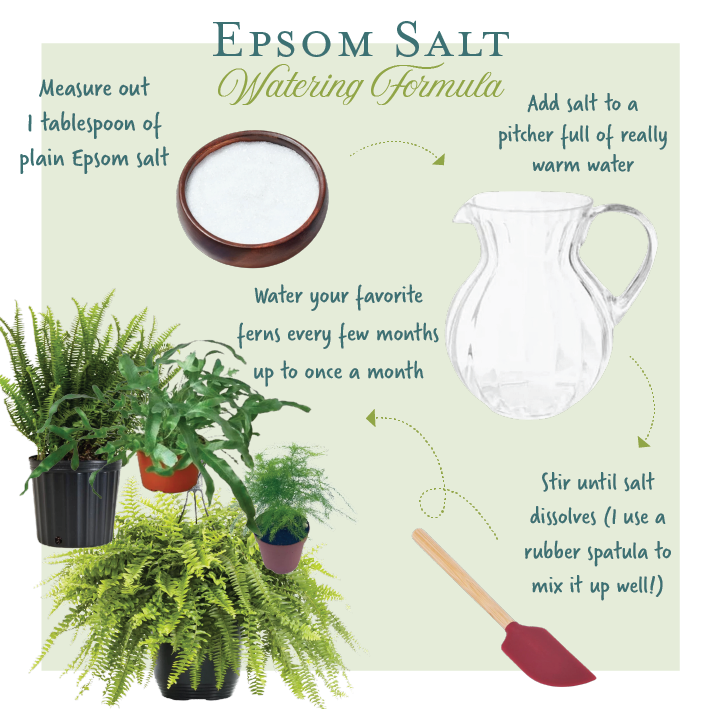Explore Why Some Plants Deny Epsom Salt as a Nutrient Resource
In the complex globe of plant nutrition, the rejection of Epsom salt as a feasible nutrient source by some plants postures an interesting quandary. The factors behind this discerning actions delve into a complex interaction of plant absorption devices, the special chemical framework of Epsom salt, and plant-specific nutrient preferences.
Plant Absorption Devices
In diving right into the complex world of plant absorption systems, it ends up being noticeable that the procedure is regulated by a sophisticated interplay of physical characteristics and molecular paths. Plants soak up nutrients largely with their origins, making use of various transportation systems to uptake important aspects such as nitrogen, phosphorus, magnesium, and potassium. Magnesium, a vital component in chlorophyll synthesis and enzyme activation, plays a crucial duty in plant growth and advancement.
The absorption of magnesium includes several actions, beginning with its availability in the soil remedy. When dissolved, magnesium ions are used up by plant roots via particular transportation healthy proteins installed in the cell membrane layers. These healthy proteins facilitate the motion of magnesium across the origin cell walls and into the plant's vascular system, where it is after that distributed to various cells to support various physical functions.
Comprehending the complex systems behind magnesium absorption in plants drops light on exactly how this crucial nutrient adds to overall plant wellness and performance. By enhancing magnesium uptake paths, cultivators can boost plant returns and quality, emphasizing the significance of comprehending plant absorption characteristics for sustainable agriculture practices.
Epsom Salt Chemical Structure
The chemical structure of Epsom salt, also understood as magnesium sulfate heptahydrate, exposes a distinctive plan of components that add to its unique residential properties and applications. The seven water particles are freely bound to the magnesium sulfate substance, allowing it to dissolve quickly in water and be easily taken up by plants via their roots.
The crystal structure of Epsom salt develops monoclinic prisms, which are extended crystals with parallel ends. This crystal shape influences the physical buildings of Epsom salt, such as its structure and solubility. Comprehending the chemical structure of Epsom salt is vital for comprehending its habits as a nutrient source and its communications with plants in agricultural and gardening practices.
Plant-Specific Nutrient Preferences
Plants show distinct preferences for certain nutrients, highlighting the value of recognizing their specific needs for optimal development and growth. These preferences are determined by numerous variables, consisting of the plant species, phase of growth, environmental problems, and dirt structure. For instance, some plants may prosper in nitrogen-rich soils, while others require more phosphorus or potassium for healthy and balanced advancement. Understanding these plant-specific nutrient choices is critical for making the most of crop yields, improving ornamental plant development, and advertising general plant wellness - what plants don't like epsom salt.

Plant-specific nutrient choices can likewise differ based on whether the plant is a monocot or dicot. Monocots, such as turfs and lilies, have various nutrient requirements compared to dicots like roses and tomatoes. Furthermore, particular plants may display specific deficiencies or toxicities when subjected to insufficient or excess levels of certain nutrients. By tailoring nutrient supplementation to meet the specific needs of each plant species, growers can enhance plant development, decrease nutrient waste, and support lasting agricultural techniques. look at this website

Soil Ph and Nutrient Uptake
Provided the crucial duty of plant-specific nutrient preferences in optimizing growth and health, comprehending the relationship between dirt pH and nutrient uptake comes to be vital. Dirt pH plays an important function in figuring out the schedule of important nutrients for plant uptake. Various plants have differing pH preferences for ideal nutrient absorption. For instance, acidic dirts with a reduced pH agree with for plants like azaleas and blueberries, while alkaline soils with a greater pH suit plants such as lilacs and clematis.
On the other hand, alkaline dirts may limit the accessibility of nutrients like copper, zinc, and iron, impacting plant growth. Maintaining the appropriate pH level in the soil is vital for ensuring that plants can successfully uptake the needed nutrients for their healthy and balanced development and productivity.
Hereditary Variables in Nutrient Uptake
In the realm of plant nourishment, the interplay of hereditary elements considerably affects the uptake of crucial nutrients critical for plant development and development. Genetic aspects play an essential role in forming a plant's capacity to soak up and make use of nutrients successfully.
Moreover, hereditary variables likewise identify the performance of nutrient uptake devices within plants. For circumstances, some plants may possess hereditary qualities that boost their ability to scavenge nutrients from the soil effectively, offering them an affordable benefit in nutrient-poor atmospheres. On the other hand, genetic variants can also bring about limitations in nutrient uptake, making sure plants much more susceptible to shortages also when nutrients are abundant in the soil.
Recognizing how hereditary elements affect nutrient uptake is crucial for establishing strategies to enhance plant nourishment and boost plant productivity in various farming settings. By unraveling the genetic mechanisms associated with nutrient uptake, researchers can function towards creating genetically improved plant varieties with boosted nutrient purchase abilities.
Conclusion

In the elaborate globe of plant nutrition, the denial of Epsom salt as a viable nutrient resource by some plants presents an interesting problem. what plants don't like epsom salt. Understanding these plant-specific nutrient preferences is essential for making the most of plant returns, improving decorative plant development, and promoting overall plant health and wellness
By customizing nutrient supplementation to meet the precise requirements of each plant species, growers can optimize plant development, lessen vitamins and mineral waste, and support lasting agricultural practices.
In the realm of plant nutrition, the interaction of hereditary elements substantially influences the uptake of essential nutrients crucial for plant development and advancement. Recognizing these intricacies in plant nutrient uptake is essential for maximizing plant development and health in farming practices.